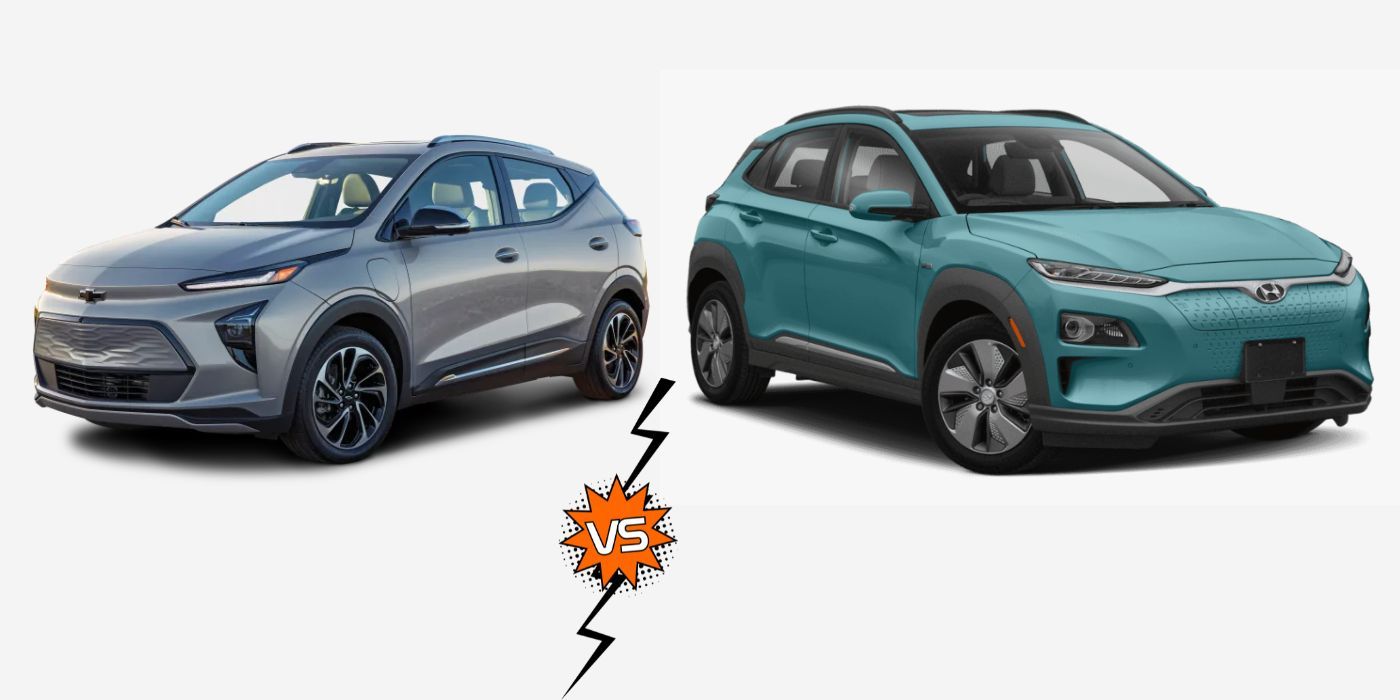Although the Chevy Bolt EUV and Hyundai Kona Electric are both affordable compact electric SUVs, which one steals the show? The Bolt EUV is a slightly larger version of the Bolt EV which debuted in 2016 with a hatchback style. Similarly, the Kona Electric borrows many design features from the gasoline variantm with the presence of an all-electric powertrain being the major difference.
Generally, both EVs rank high in terms of affordability, but when compared — there's a slight difference. The Chevy Bolt EUV comes in two trim levels which start at $28,795 (LT) and $33,295 (Premier). Destination fees and other related charges are included. Meanwhile, consumers get to choose from three different Hyundai Kona Electric variants called SE ($33,550), SEL ($37,300), and Limited ($41,550). Not only does the Chevy edge out the Hyundai in terms of pricing, but an available tax credit of up to $7,500 also makes the Bolt EUV more attractive. The Kona EV isn't eligible for the federally-funded incentive.
Cargo, Range, and Charging Times
Given their compact sizes, it's worth examining both models to see which can hold more cargo. While the Kona Electric offers a maximum cargo capacity of 45.6 cu ft., the Bolt EUV's limit is capped off at 56.9 cu ft. which means more room for luggage. The above figures are attainable only when the rear seats are collapsed.
Moving to performance, the Bolt EV features a 65 kWh lithium-ion battery that delivers up to 200 horsepower/266 lb-ft of torque and an EPA-estimated driving range of 247 miles. It takes 6.8 seconds for it to reach 60 mph from 0, making it one of the slowest EVs. The Kona Electric shines in the range department, offering 11 more miles than the Bolt EUV (258). The Hyundai also comes with 201 hp/291 lb-ft of torque. Regenerative braking is standard for both models.
Next up is charge speeds. The Bolt EUV can add approximately 4 miles hourly, between 25 and 37 miles hourly, or 95 miles in 30 minutes through a 120V cord, dual level cord (120V/240V), and a DC fast charger. Meanwhile, the Hyundai EV can charge from 10 to 100 percent in 9+ hours when using a Level 2 connector while a DC fast charger can raise the battery level from 10 percent to 80 percent within 47 to 64 minutes depending on the power rating.
Additional Features
Remote vehicle access is available for both vehicles through the Hyundai Digital Key and myChevrolet applications. While the Hyundai app is limited to select Android-enabled devices, the Chevrolet app is compatible with devices running on Android and iOS software. Apple CarPlay and Android Auto smartphone integration are available for both models. The EUV comes with a 10.2" infotainment touchscreen and an 8" instrument cluster. While the Hyundai's infotainment display shares an identical size (10.25") with the Chevy, its 10.25" instrument cluster gives it an advantage.
Unlike the Bolt EV, the EUV version features Super Cruise, the advanced driving and safety assistant from General Motors. Enhanced automatic emergency braking and lane-centering are among the many available features. The Kona Electric gets Hyundai's SmartSense which brings lane-keeping assist, Smart Cruise Control with stop & go, and many other functions. According to Consumer Reports’ recent ranking of 12 automakers' active driving assistance systems, Super Cruise was rated second while Highway Driving Assist, an off-shoot of SmartSense, occupied last place.
Essentially, both models are attractive on the outside and inside with decent technological features. While shoppers shouldn't expect jaw-dropping performance, the EUV and Kona Electric represent what a budget-friendly EV should be. While the Kona Electric gets more range, the Chevy may appeal more to consumers largely because it qualifies for the $7,500 EV tax credit.


